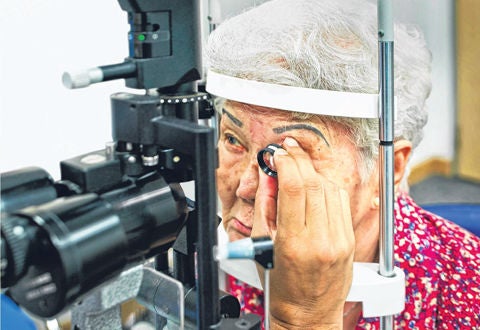
Some of them may not be the most efficient or most accurate tool to detect an ailment
Health screening is for those who are well. In the absence of obvious symptoms, the tendency is to think that it is better to do as many tests as possible.
However, doctors said screening tests should be based on a risk assessment that is specific to each person, which takes into account screening guidelines for the general population based on factors such as age, sex and family history.
Dr Winston Ho, medical director of Parkway Shenton, which runs a chain of general practice clinics and health screening centres, said: “We would advise patients of additional tests which might be appropriate for their conditions to be included in the screening.”
Indeed, Dr Ng Lee Beng, a consultant at the department of family medicine and continuing care at Singapore General Hospital, said some tests are good to have. These include:
- Full blood count tests: These can pick up anaemia in menstruating women with significant monthly blood loss or in people with hidden gut cancer; and
- Liver function tests: The results can be abnormal in those who drink alcohol excessively or who consume a lot of refined carbohydrates to the extent that they already have liver inflammation.
Not everyone will benefit from the same tests and some tests are not recommended as there is not enough information or evidence to support their use as a screening tool for the general public, said the Health Promotion Board (HPB).
Dr Derek Koh, head of Thomson Wellth Clinic @ Novena, said a person with risk factors for the heart may need to do regular stress electrocardiogram (ECG) tests.
Those who practise high-risk sexual behaviour should include testing for the human immunodeficiency virus (HIV) and syphilis, a sexually transmitted disease, as part of their health screening.
Also, people exposed to excessive noise should get regular checks for hearing loss.
Examples of screening tests that are not recommended to the public for mass-screening purposes, as stated on the HPB website, are certain cancer markers, an ultrasound pelvis test to check for cervical cancer, and tonometry to screen for glaucoma, a group of diseases that can harm the optic nerve in the eye and cause blindness.
Tonometry measures the pressure within the eye with the use of a device called a tonometer. A highpressure reading may point to glaucoma. However, the test alone is not enough to detect glaucoma, so other tests will need to be done too.
Associate Professor Tina Wong, a senior consultant and head of the glaucoma department at the Singapore National Eye Centre, said the gold-standard tonometry test is the Goldmann applanation tonometer, which involves contact of the instrument with the surface of the eye.
An eye professional uses this to detect intraocular pressure (pressure inside the eye), which is the only risk factor that can be treated to prevent glaucoma, she said.
A form of non-contact tonometry is a warm puff of air, delivered to the eye from a machine, to ascertain eye pressure.
Prof Wong said this test “is not as accurate. But, because it does not require operator expertise, it is useful for screening the general population at a primary-care level to ascertain if specialist referral is warranted”.
Tonometry, she added, should be part of the evaluation for glaucoma and not done in isolation to screen for it. Those with risk factors, such as a family history of glaucoma, should get screened, she said.
Contributed by

English
The Straits Times - SNEC and SGH doctors on health screening.pdf

English
The Straits Times - ABCs of different types of tests.pdf














 Get it on Google Play
Get it on Google Play